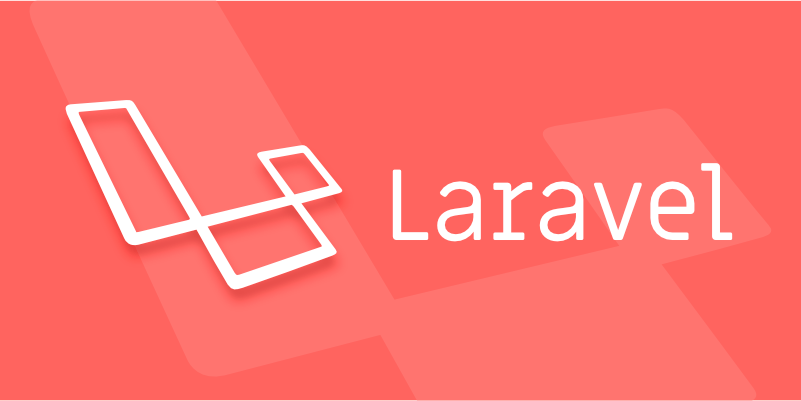Advanced data validation techniques in Laravel
Jul 02, 2025 pm 03:02 PMLaravel provides a variety of advanced data verification techniques, including encapsulating complex logic using custom rule objects, reusing verification rules using form requests, implementing conditional verification through sometimes methods, and uniqueness checking in combination with database rules. First, create a custom rule class through make:rule and define logic in passes() and message() methods, which can achieve complex verification such as age limit; second, use make:request to create a form request class to separate the verification logic and directly inject it into the controller to improve the code organization structure; third, call the sometimes() method to dynamically decide whether to verify a certain field based on the input value, which is suitable for dynamic form scenarios; finally, use Rule::unique() and call the ignore() method to exclude the current model ID, to avoid misjudgment of uniqueness during updates, and add additional query conditions in combination with where(). Together, these approaches improve the maintainability and robustness of Laravel applications.

Validating data properly is one of the most important parts of building a solid Laravel application. While basic validation gets you started, there are more advanced techniques that can help make your forms smarter, cleaner, and more secure.

Custom Rule Objects for Complex Logic
Sometimes, validation rules go beyond checking if an email is required or a password is long enough. For example, you might need to validate that a user's birthday makes them at least 18 years old — something that can't cleanly be handled with inline rules.

That's where custom rule objects come in handy. You can create a reusable rule using the make:rule Artisan command:
php artisan make:rule MinimumAgeRule
Inside the generated class, you define the logic in the passes() and message() methods. Then you can use it like this in a form request or controller:

use App\Rules\MinimumAgeRule;
$request->validate([
'birthdate' => ['required', new MinimumAgeRule(18)],
]);This keeps your validation logic clean and separated from your controllers or form requests.
Using Form Requests for Reusable Validation Logic
When you find yourself repeating the same validation across multiple places, form requests become super useful. They're custom request classes that encapsulate all the validation logic for a specific form or API endpoint.
To create one:
php artisan make:request StoreUserRequest
In the generated class, set the validation rules in the rules() method and control access via the authorize() method. Then, type-hint it in your controller:
public function store(StoreUserRequest $request)
{
// The data is already validated here
}This helps organize complex validation into dedicated files and avoids cluttering your controllers.
Conditional Validation with sometimes
There are times when a field should only be validated under certain conditions. For example, if a user selects "Other" as their gender, you might want them to fill out a text field explaining it.
Laravel gives you the sometimes() method in the validator builder for these cases. Here's how it works:
$validator = Validator::make($request->all(), [
'gender' => 'required',
]);
$validator->sometimes('gender_other', 'required|max:255', function ($input) {
return $input->gender === 'other';
});It takes three arguments:
- The field name to conditionally validate
- The validation rules
- A closure that returns true or false based on input
This is especially helpful in dynamic forms where fields appear or disappear based on user input.
Leveraging Database Rules for Unique Checks
When validating unique values ??like emails or usernames, you usually don't want to block updates just because the current value hasn't changed. Laravel provides a neat way to ignore the current model's ID during a unique check.
For example:
'email' => Rule::unique('users', 'email')->ignore($user->id),
You can also chain extra conditions, like ignoring soft-deleted entries:
'email' => Rule::unique('users')->where(function ($query) {
return $query->whereNull('deleted_at');
})->ignore($user->id),This prevents false errors when editing existing records and ensures the validation behaves correctly even after deletions.
These advanced validation techniques in Laravel help keep your codebase clean, readable, and maintainable. Whether it's breaking down complex logic into reusable rules, organizing validation into form requests, or handling conditional checks smartly, each method plays a role in making your app more robust. Basically, it's about knowing which tool fits best for each situation — and not trying to force everything into the same mold.
The above is the detailed content of Advanced data validation techniques in Laravel. For more information, please follow other related articles on the PHP Chinese website!

Hot AI Tools

Undress AI Tool
Undress images for free

Undresser.AI Undress
AI-powered app for creating realistic nude photos

AI Clothes Remover
Online AI tool for removing clothes from photos.

Clothoff.io
AI clothes remover

Video Face Swap
Swap faces in any video effortlessly with our completely free AI face swap tool!

Hot Article

Hot Tools

Notepad++7.3.1
Easy-to-use and free code editor

SublimeText3 Chinese version
Chinese version, very easy to use

Zend Studio 13.0.1
Powerful PHP integrated development environment

Dreamweaver CS6
Visual web development tools

SublimeText3 Mac version
God-level code editing software (SublimeText3)

Hot Topics
 How to create Laravel package (Package) development?
May 29, 2025 pm 09:12 PM
How to create Laravel package (Package) development?
May 29, 2025 pm 09:12 PM
The steps to create a package in Laravel include: 1) Understanding the advantages of packages, such as modularity and reuse; 2) following Laravel naming and structural specifications; 3) creating a service provider using artisan command; 4) publishing configuration files correctly; 5) managing version control and publishing to Packagist; 6) performing rigorous testing; 7) writing detailed documentation; 8) ensuring compatibility with different Laravel versions.
 What is Middleware in Laravel? How to use it?
May 29, 2025 pm 09:27 PM
What is Middleware in Laravel? How to use it?
May 29, 2025 pm 09:27 PM
Middleware is a filtering mechanism in Laravel that is used to intercept and process HTTP requests. Use steps: 1. Create middleware: Use the command "phpartisanmake:middlewareCheckRole". 2. Define processing logic: Write specific logic in the generated file. 3. Register middleware: Add middleware in Kernel.php. 4. Use middleware: Apply middleware in routing definition.
 Laravel Page Cache Policy
May 29, 2025 pm 09:15 PM
Laravel Page Cache Policy
May 29, 2025 pm 09:15 PM
Laravel's page caching strategy can significantly improve website performance. 1) Use cache helper functions to implement page caching, such as the Cache::remember method. 2) Select the appropriate cache backend, such as Redis. 3) Pay attention to data consistency issues, and you can use fine-grained caches or event listeners to clear the cache. 4) Further optimization is combined with routing cache, view cache and cache tags. By rationally applying these strategies, website performance can be effectively improved.
 Laravel MVC Architecture: what can go wrong?
Jun 05, 2025 am 12:05 AM
Laravel MVC Architecture: what can go wrong?
Jun 05, 2025 am 12:05 AM
Laravel'sMVCarchitecturecanfaceseveralissues:1)Fatcontrollerscanbeavoidedbydelegatinglogictoservices.2)Overloadedmodelsshouldfocusondataaccess.3)Viewsshouldremainsimple,avoidingPHPlogic.4)PerformanceissueslikeN 1queriescanbemitigatedwitheagerloading.
 How to populate test data using Seeder in Laravel?
May 29, 2025 pm 09:21 PM
How to populate test data using Seeder in Laravel?
May 29, 2025 pm 09:21 PM
Using Seeder to fill test data in Laravel is a very practical trick in the development process. Below I will explain in detail how to achieve this, and share some problems and solutions I encountered in actual projects. In Laravel, Seeder is a tool used to populate databases. It can help us quickly generate test data, which facilitates development and testing. Using Seeder not only saves time, but also ensures data consistency, which is especially important for team collaboration and automated testing. I remember that in a project, we needed to generate a large amount of product and user data for an e-commerce platform, and Seeder came in handy at that time. Let's see how to use it. First, make sure your Lara is
 What is Laravel Migrations? How to use it?
May 29, 2025 pm 09:24 PM
What is Laravel Migrations? How to use it?
May 29, 2025 pm 09:24 PM
Laravel's migration is a database version control tool that allows developers to programmatically define and manage database structure changes. 1. Create a migration file using the Artisan command. 2. The migration file contains up and down methods, which defines the creation/modification and rollback of database tables respectively. 3. Use the phpartisanmigrate command to execute the migration, and use phpartisanmigrate:rollback to rollback.
 Laravel: Simple MVC project for beginners
Jun 08, 2025 am 12:07 AM
Laravel: Simple MVC project for beginners
Jun 08, 2025 am 12:07 AM
Laravel is suitable for beginners to create MVC projects. 1) Install Laravel: Use composercreate-project--prefer-distlaravel/laravelyour-project-name command. 2) Create models, controllers and views: Define Post models, write PostController processing logic, create index and create views to display and add posts. 3) Set up routing: Configure/posts-related routes in routes/web.php. With these steps, you can build a simple blog application and master the basics of Laravel and MVC.
 What are policies in Laravel, and how are they used?
Jun 21, 2025 am 12:21 AM
What are policies in Laravel, and how are they used?
Jun 21, 2025 am 12:21 AM
InLaravel,policiesorganizeauthorizationlogicformodelactions.1.Policiesareclasseswithmethodslikeview,create,update,anddeletethatreturntrueorfalsebasedonuserpermissions.2.Toregisterapolicy,mapthemodeltoitspolicyinthe$policiesarrayofAuthServiceProvider.






